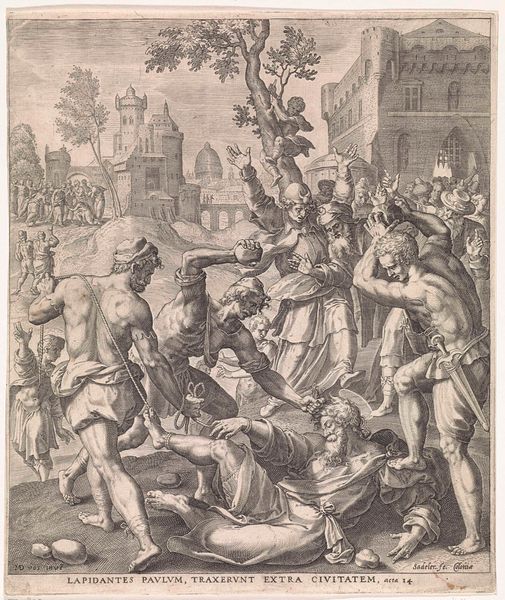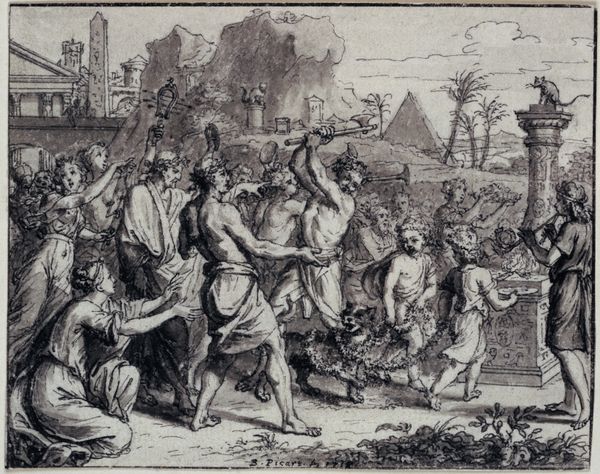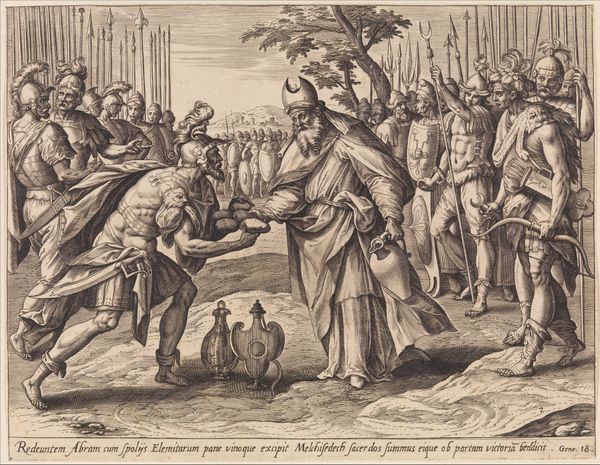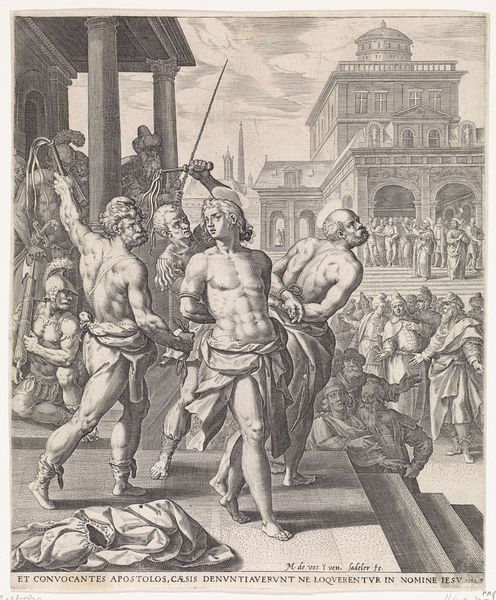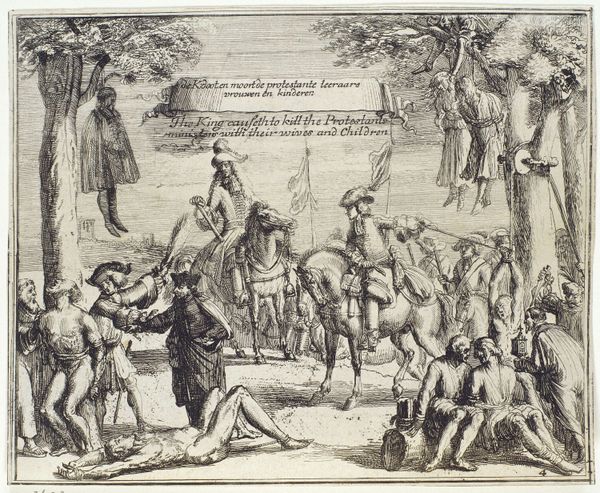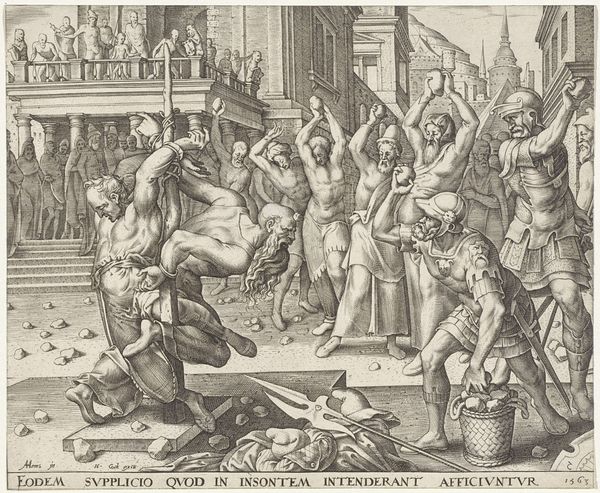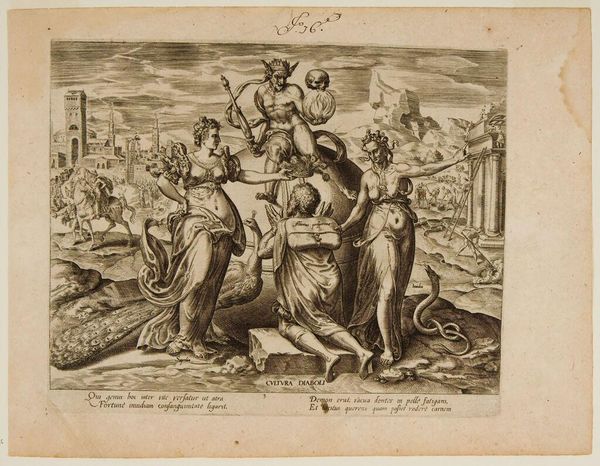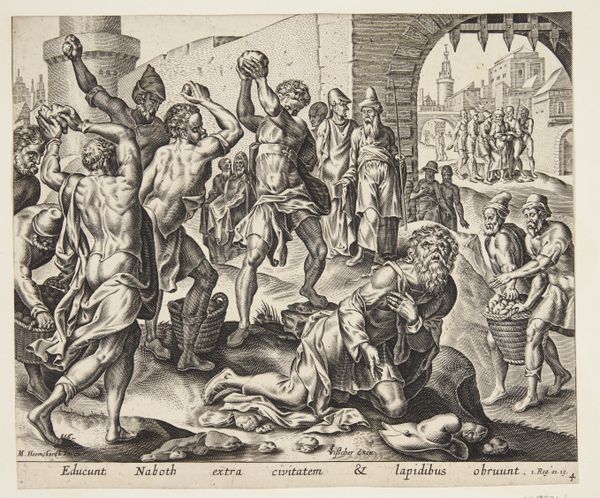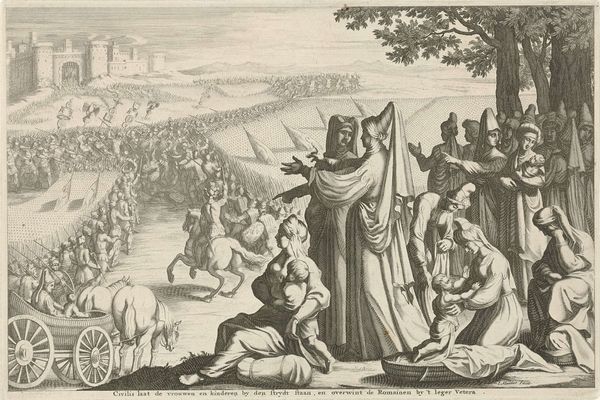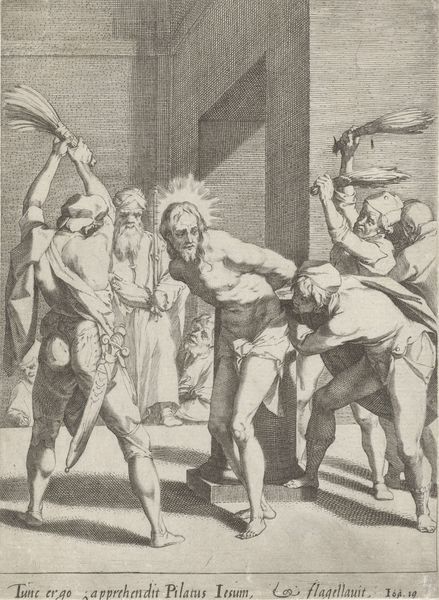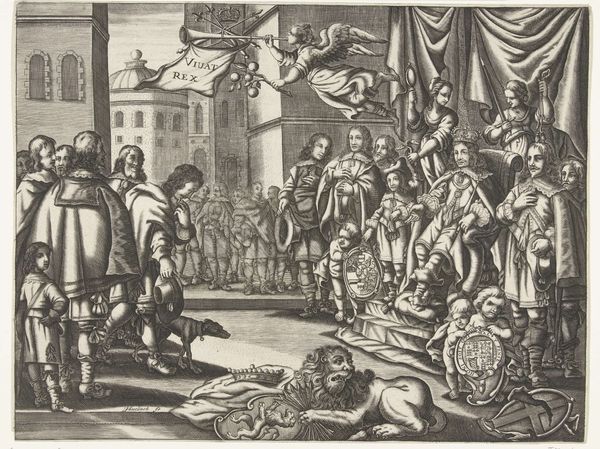
Judith en haar dienstmaagd onderweg naar het kamp van Holofernes 1562
0:00
0:00
johannesoflucasvandoetechum
Rijksmuseum
drawing, print, paper, ink, engraving
#
drawing
#
narrative-art
#
pen drawing
# print
#
landscape
#
figuration
#
paper
#
ink
#
history-painting
#
northern-renaissance
#
engraving
Dimensions: height 271 mm, width 202 mm
Copyright: Rijks Museum: Open Domain
Curator: This compelling 1562 engraving, currently residing here at the Rijksmuseum, is entitled "Judith en haar dienstmaagd onderweg naar het kamp van Holofernes," attributed to Johannes or Lucas van Doetechum. Its graphic intensity immediately draws me in. Editor: It's powerful. A kind of constrained tension, isn't it? You see the figures of Judith and her maid juxtaposed with the bustling activity in the camp beyond, all rendered in meticulous detail with ink on paper. It gives off the feeling of a high-stakes story playing out against a turbulent backdrop. Curator: Exactly. I am always fascinated by the labor inherent in printmaking during this period. Think of the repetitive motions, the meticulous skill required to create such intricate lines… the act of physically engraving the image into a plate. It underscores the piece's value beyond simple representation. Editor: Agreed. Looking closer, we have the Biblical figure of Judith—a widow, and thus doubly marginalized—deploying a feminine strategy of infiltration into the enemy camp, as their supposed means of salvation. And the contrast! The assumed chaos, represented by the laboring bodies, is cleverly offset by Judith and her companion’s calm appearance. Curator: Consider also the materials available to these artists: paper, ink, engraving tools. Their ready availability dictated the proliferation of this narrative; how people from different classes accessed the material. Editor: It brings up interesting questions, doesn't it? Were the images used for education, moralizing or simple diversion for a populace amidst constant upheavals of all kinds. Or consider, too, Judith's positioning within Renaissance discourse; not merely the righteous defender of her people, but also a complex articulation of femininity in the face of violence and power. Curator: A vital consideration, particularly if we consider the function of prints during this period, how prints facilitated the wider dissemination of religious and secular narratives, crafting Judith’s status as cultural icon and her image’s circulation to an ever wider market for mass produced visual imagery. Editor: Exactly, an accessible artwork whose symbolic significance goes beyond its tangible material nature. I find this narrative's continued relevance profoundly unsettling, the issues around power and identity still resounding through the centuries. Curator: A final thought – let’s recall how essential labor was within print shops; each individual deeply invested in shaping how such moral tales took shape visually – something often absent in conventional art histories which so heavily prioritizes painting.
Comments
No comments
Be the first to comment and join the conversation on the ultimate creative platform.
